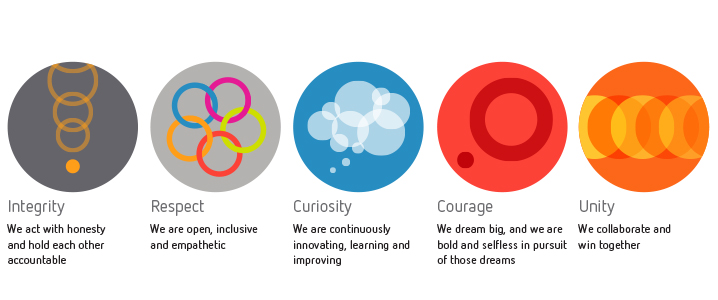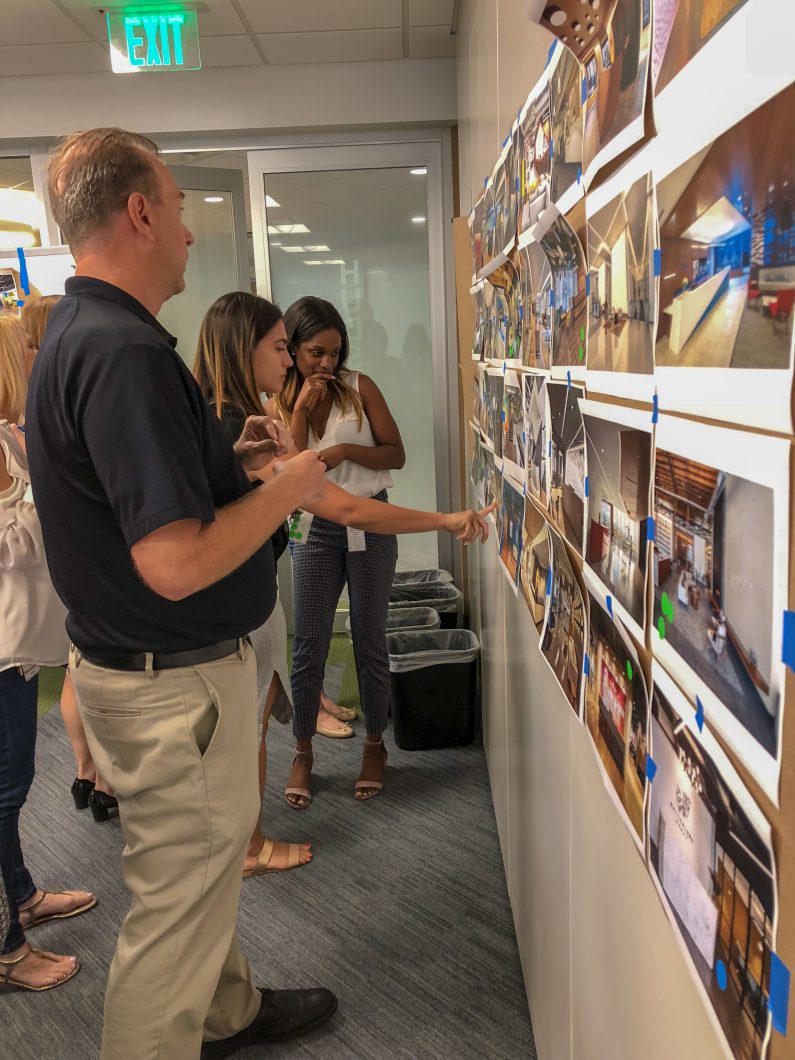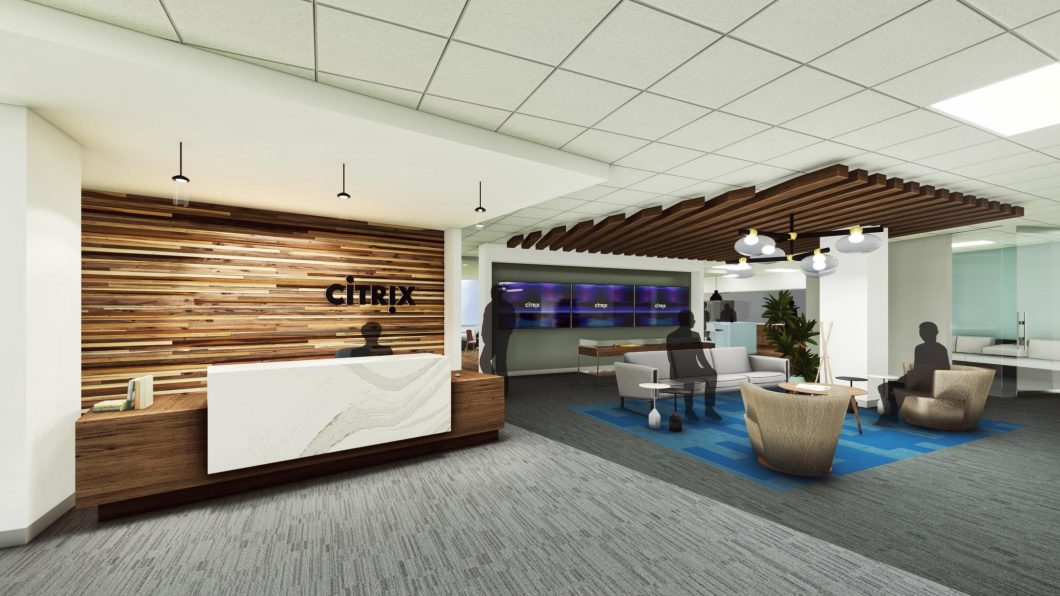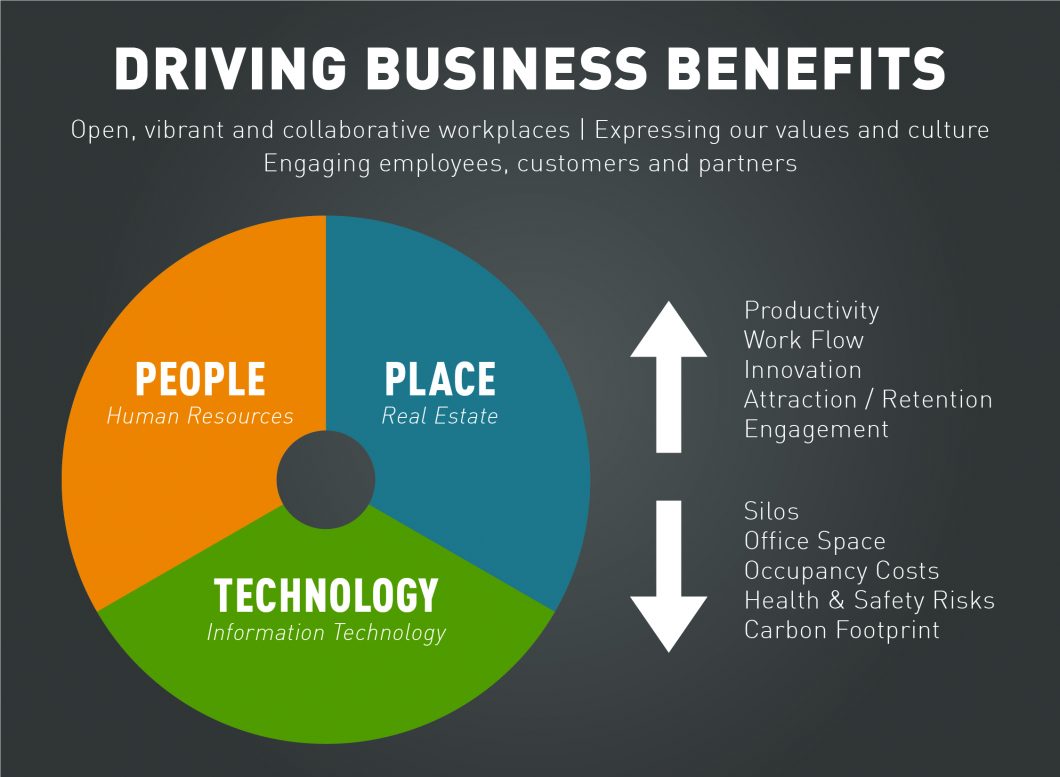
Partnering to transform the employee experience: Citrix’s journey to align people, place and technology
How can companies align physical space, culture, and technology to deliver an employee experience for the digital age, with company values at the core and improved productivity as a result? One path is to transform the workplace. This makeover is not simple and requires a well-thought-out plan that considers corporate values, business strategy, and vision of senior leadership. Ideally, it also actively involves the core group of people that the transformation will impact the most—the employees.
This is exactly what the Citrix Real Estate & Strategy team, human resources (HR) department, and BHDP Architecture did when partnering on the transformation of the HR team space from individual offices to unassigned open seating. The goals were three-fold: (1) reduce the physical and metaphysical barriers between prospective, new, and tenured employees; (2) reflect the company culture and brand promise; and (3) model an environment for employees and customers that encourages key behaviors and utilizes advanced technology to achieve strategic results.

Motivators for change
When approaching an organizational transformation such as workplace redesign, it is important to have a solid business case to help communicate the vision and get employees motivated around the change. For Citrix, the two major drivers were corporate values and timing.
Donna Kimmel, executive vice president of human resources and chief people officer of Citrix, knew it was time for a change when she realized that the team’s physical workspace no longer matched the desired company culture. “One of the Citrix core values is unity. We believe that our values are central to the design of programs and to our decision-making. We also put people first and create experiences that enable our talent to do their best and be their best. The physical workspace transformation offered us the opportunity to build with a values-first mindset and design an employee experience for the HR team, candidates, hiring managers, and our broader employee population that truly reflects who we are.”
Even though there can be benefits from a workplace transformation that enables better alignment to company values and culture, this driver alone might not build a strong enough business case. After all, there is a substantial financial investment with this type of redesign. As a result, having solid metrics that indicate a return on investment (ROI) to the CFO and senior leadership team is often required. However, in the case of Citrix HR, timing was on their side. There were already discussions about the team space being slated next in the campus upgrade, and since HR plays such a critical role in the enterprise function as an experience hub both internally with employees and externally with prospects, what better group to serve as a role model for the future of work?
SCARF and employee engagement with ‘Drive to Five’
While gaining the financial approval and business support from the executive team is imperative in any situation requiring organizational change, understanding the impact to the organization, including the employees, is equally important. Asking the HR team to relinquish the privacy, safety, and personalization of a traditional office requires big shifts in how they engage and behave in their updated physical space. As such, the team leading the change needed to be dedicated to enabling employee involvement in the solution of the new workspace design.

Research conducted by both McKinsey Consulting and Prosci, a leading authority on change management, found that change projects are twice as likely to fail when no executive sponsor of the change has been identified. Conversely, success is more likely achieved when users are engaged and involved in the development of the solution. Team members who clearly understand the business reason for the change, while observing a leader who is an active participant in the project, will take ownership and a vested interest in the desired outcomes. This mindset increases the levels of adoption and helps to realize the return on the investment.
To collaborate with and influence the leaders and employees, the team leading the change decided to use the SCARF model designed by Dr. David Rock as a guide. SCARF is an acronym for status, certainty, autonomy, relatedness, and fairness. Any change or interaction that decreases one of these elements will cause a person to move away (aka: resistance). A gain in any of the elements will cause a person to move toward (aka: adoption). Rock highlights that the elements can counter-balance each other. A triple gain in autonomy, for example, might be enough to offset a loss in status. And, when it comes to losing an office, that’s exactly what the Citrix team has seen during prior workplace transformations. In many cases, the freedom to choose where to sit in order to do one’s best work has counterbalanced the status loss of an office.
Since Citrix places such a high value on its employees, their engagement, and their overall satisfaction, BHDP spent a significant amount of time and energy on the front-end to gain a comprehensive understanding of all the nuances related to the redesign from all levels and functions within the organization. This was carried out through a series of activities such as leadership interviews, visioning sessions and team focus groups, as well as on-site observations. This initiative led to the creation of five, high-value focus areas, or the “Drive to Five,” which are: (1) an HR welcoming showcase to greet new hires and employees, (2) a clubhouse feel to inspire a sense of belonging, (3) workspace options to balance the needs of different work styles, (4) new protocols that respect the private and confidential nature of HR, and (5) the promotion of comfort and well-being with ergonomic and natural designs.

New design goals balance people, place and technology
After securing executive sponsorship, identifying benefits of the new way of working that offset the loss of dedicated offices, and involving employees in the ideation process, the next phase was finalizing the design.
The challenge with a large campus is that many renovation projects simply bring old spaces up to a current standard that might have been established three to five years prior, when the overhaul began. Forward-thinking professionals recognize the need to address this important question: How do you create an environment that continues to evolve the workspace, while not seeming so different that it’s ill-fitted for the campus or isn’t able to accommodate another team in a future campus restack? The key for Citrix was to balance elements of the standard renovated floor, like open seating along the exterior walls, with innovative solutions that holistically address people, place, and technology, and that are future-proofed as much as possible.

The final design that evolved through the executive vision and employee-engagement activities resulted in aligning the way the team works with the open, collaborative, and unified culture by removing walls and assigning teams’ neighborhoods rather than individual seats. To address the confidential nature of HR, there are plentiful two- to six-person rooms, some of which are pop-in and others that can be booked in advance. The goals were to encourage more in-person interactions, allow for private conversations, and remain consistent with workplace design of other floors and sites. The intention is to promote collaboration while accounting for and respecting diversity as it pertains to how people like to work. The new design includes choice and control over places to sit and meet and furniture that invites and supports different postures and interactions. The technology solutions were developed by envisioning how to remove friction and amplify the experience of employees and candidates. Some examples include an interactive video wall in the welcome center, digital whiteboards in the learning center, improved training and conference room technology, and workspace hardware tailored to the way the team works.
The metrics and anticipated outcomes
The project construction is soon ending, and results of the careful and thorough planning will be measured after the team occupies the space. Even though a solid foundation exists, it is always a challenge to measure the ROI of workplace redesigns. That’s because there are often softer benefits that can make a big impact both internally and externally. This project is an example of where Citrix is not only talking about how its customers can accelerate digital transformation—the company is living it.
“Partnering with our users to create spaces with choice and control provides tangible examples to our customers of the power of our solutions,” according to Guy Desautels, vice president of Real Estate & Strategy for Citrix. “Being our own best example enables a business function, like HR, to partner with Sales to demonstrate to visiting customers how we integrate people, place, and technology to foster both culture and productivity.”
Another indirect benefit of a high-quality workplace design that incorporates ways to increase collaboration and productivity is happier and more engaged employees. Success (and challenges) is being measured through pre- and post-project surveys, frequency of the team working in the office versus remote, and satisfaction assessments of employees coming to the space for interviews, HR assistance, and learning and development. In a world of work where the employee experience is the secret sauce for attracting and retaining employees and helping them do great work, Citrix is building best practices around mobility, flexibility, and a talent-first mindset.
Originally published in CoreNet Global The Leader, June 2019
